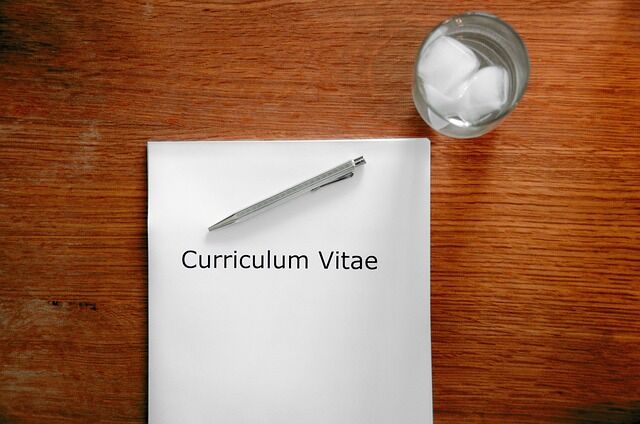Author Raghavan Srinivasan is a graduate in Chemical Engineering from Madras University and a post-graduate in MBA from McMaster University, Canada. After working as a systems analyst for a few years, he was a free-lance IT professional before deciding to become an entrepreneur in the social development sector. At present he is a professional consultant in this area. He lives in New Delhi with his wife and son. He has written and edited a number of documents for governments and the UN system. Raghavan Srinivasan has also been editing a magazine called ghadar jari hai for several years now. He has written several cover stories, articles and travelogues for print and online newspapers.
Author Raghavan Srinivasan is passionately interested in Indian literature, philosophy and history. He believes that the past of our sub-continent has many clues to help us find our way in these confusing times.
His first historical fiction, ‘Yugantar: The Dream of Bharatavarsha Takes Shape 2300 Years Ago’ has been published by Leadstart.
TBE: Tell us something about your latest book ‘Rajaraja Chola’ that isn’t in the blurb?
Author Raghavan Srinivasan: A massive amount of information is undoubtedly available on Rajaraja Chola, the greatest emperor that South India has seen, from stone inscriptions, copper plates, coins, manuscripts and architectural findings, though historians have noted the disappearance of several literary works belonging to his period with gloom.
But the challenge was to present the story of Rajaraja in an interesting way, particularly to the millennials, without in any way undermining the authenticity and veracity of the narrative. This is easier said than done. Even well-established historians differ violently, in the academic sense, on their interpretation of historical facts surrounding his imperial rule. Rajaraja’s regime has been variously categorized as ‘tyrannical’ at one end to nothing less than a ‘golden age’ at the other and more often as a chronicle of ‘plunder and piety’.
TBE: What first drew you to the Chola dynasty and to the study of Rajaraja Chola? In your opinion, what makes his story relevant for our times?
Author Raghavan Srinivasan: Many novels and books have been written on Rajaraja, or Arulmozhivarman, as he was called before his ascension to the Chola throne. Films and TV serials have been made on a modest scale. In the 1950s, novelist Kalki Krishnamurthy published Ponniyin Selvan as a weekly series in the Tamil magazine Kalki.Even today, the novel has a cult following and a massive fan base among readers across several generations.
A popular film on Rajaraja Cholan with thespian actor Sivaji Ganesan in the lead role was released in 1973 and received critical acclaim. In 2010, a spectacular celebration was organized to celebrate the 1000th year of the Brihadeeswara temple, built by Rajaraja in Thanjavur. A film is under making by director Mani Ratnam based on Kalki’s magnum opus. Several history books, particularly Nilakanta Sastri’s The Colas, a landmark volume on the Chola dynasty, and Champakalakshmi’s Trade, Ideology and Urbanisation provide a good narrative on the reign of the emperor, as a part of a larger setting.
Yet they are not enough, considering the colossal changes that took place in Thamizhagam during the 25 years of his reign from 985 CE and beyond. Till today, there is no publication in English, to my knowledge, that comprehensively covers the regime of this illustrious empire builder, almost subscribing to the anguish of the people of the South that their history has been given second place.
There are many who dismiss history as irrelevant in today’s changing world. For them, the society that existed 1000 years back and events connected to it are feudal, backward and anachronistic. But a civilisation which forgets its history has nothing to build on for its future. Negating one’s heritage opens the door to subjugation by some other ‘superior culture’ of an ‘advanced’ civilisation. This is what happened during the colonial conquests when a section of the freedom movement failed to draw inspiration from our rich heritage and instead succumbed to western thought.
Therefore, the story of Rajaraja is very relevant today. There are huge expectations among the youth today to learn more about our rich heritage from authentic sources. I hope this book encourages them on their illuminating journey.
TBE: Is there more pressure when you’re writing non-fiction history? How is the research process different from historical fiction?
Raghavan Srinivasan: Both fiction and non-fiction pose different challenges. Historical fiction gives the author more flexibility in dealing with a particular historical event or a historical personality. But academics and professionals do not take historical fiction seriously.
Non-fiction, on the other hand, requires much more research and a rigorous presentation of facts. Historical non-fiction has to be strictly based on evidence such as inscriptions, copper plates, coins, archeological findings, etc. It has a longer shelf-life than fiction.
TBE: What challenges did you encounter while researching and writing your book? What surprised you most in your research?
Raghavan Srinivasan: There is very little written record of his personality. No eyewitness has rendered to Rajaraja the service which Nuniz and Paes did to Krishna Deva Raya. What was very surprising was that there is not even a well-attested statue or a painting of this king that has come down to us. Even his burial place has not been conclusively identified.
All that we know of his reign, however, and that is not little, attests his potent personality and the firm grasp of his intellect which allowed nothing to escape its vigilance and applied itself with as much vigor to the minutest details as to the sublimest ambitions of statecraft.
TBE: Winning the war is easier than securing the peace. How did Rajaraja secure his empire and leave behind a stupendous legacy?
Raghavan Srinivasan: Historians have acknowledged that military might may not have been the only factor for the expansion of the Chola overlordship under Rajaraja and Rajendra from their core domain in the Kaveri basin to the entire Tamil plain and its adjacent upland. It was not achieved nor was it maintained by military means alone. Exemplary moral behavior may have also contributed to this. Chola kings… were exemplars of medieval South Indian kingship and models of appropriate rulership for chiefs of the macro region; it was less the might of the Chola rulers than it was their moral appropriateness that provided the basis of Chola rule over the Coramandel plain.
In his reign, powerful productive forces were unleashed to take the empire to new heights in art, architecture, religion, literature, administration, statecraft, military and naval might.
TBE: How has the legacy of Rajaraja Chola shaped India into the country it is today?
Raghavan Srinivasan: It will not be an overstatement to say that Rajaraja Chola left a stupendous legacy behind him, which has not lost its sheen even after a thousand years. His reign holds a vital place in the history of Thamizhagam as well as the rest of India. His thirty long years of rule constituted the formative period of the Chola Empire.
Victory in wars can get you on the throne, but they are not enough to keep you there. It is beyond debate that ‘in the organization of the civil service and the army, in art and architecture, in religion and literature, we see at work powerful forces newly liberated by the progressive imperialism of the time’. The productive forces that emerged, the nagarams which flourished, the in-land and overseas trade networks that were established, the high standards of art, literature and craft that were attained, makes him an extremely popular emperor. Women of the upper class and saints enjoyed honour and privileges in the empire, as we had seen in many instances.
The state did not play on the religious divisions among the people. The thousand-year-old administrative system and the principle of self-administration that he encouraged are relevant even today, of course after rendering them modern. That altogether would be the right approach to take to the great stories, legends and achievements of this great empire and its accomplished architect – the emperor and the entire talent he commanded from every corner of the empire.
TBE: What do you think we can learn today from Rajaraja Chola who ruled in India more than 1000 years ago? What could Rajaraja Chola tell the current administration?
Author Raghavan Srinivasan: The heights achieved in architecture, sculpture, art and literature during the times of the Chola empire remain unparalleled even today. The Uttaramerur inscriptions which describe the democratic process 1000 years back are still considered very relevant in today’s society where caste and income inequalities have widened and democratic aspirations of the people unfulfilled.
TBE: Which history books or authors have inspired you?
Raghavan Srinivasan: Nilakanta Sastri, A.L. Basham, Champakalakshmi, Romila Thapar, Alex Rutherford and Conn Iggulden are history writers who have inspired me.
TBE: How was your publishing experience with Leadstart?
Raghavan Srinivasan: Pretty good. They guided me in many aspects of publishing and popularizing the book.
TBE: Is there anything you are currently working on that may intrigue the interest of your readers?
Raghavan Srinivasan: I am now working on a historical, biographical fiction, which I plan to publish in two parts. The story is located in twentieth century Madras and the political milieu of Madras Province.




